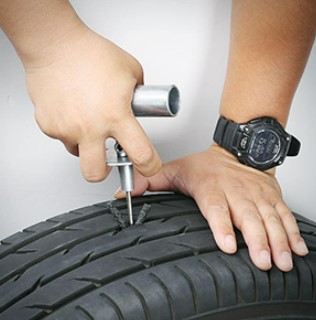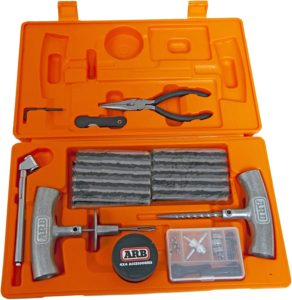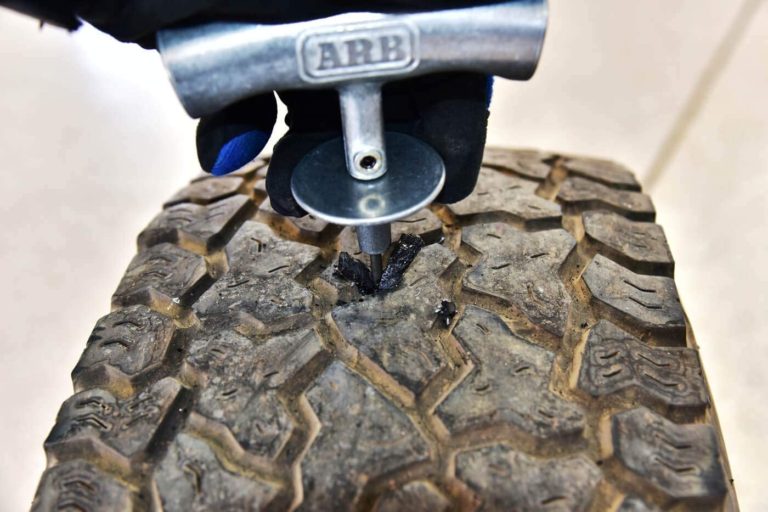When a tire gets punctured, it can be a stressful experience. The thought of having to replace an entire tire due to a small puncture can be overwhelming, especially if you are on a tight budget. This is why many people consider using tire plugs as a temporary fix to their punctured tire. However, the question remains, are tire plugs safe for repairing tires?
Tire plugs are a simple and inexpensive solution to repair a punctured tire. They are made of a thin, fibrous material that is inserted into the hole in the tire, creating an airtight seal. The material expands to fill the hole, creating a tight fit that stops the air from escaping. This temporary repair can last for a few months, or even years, depending on the size and location of the puncture.
Are Tire Plugs Safe?
The short answer is, yes, tire plugs can be a safe and effective solution for repairing a punctured tire. However, it’s important to understand the limitations and proper use of tire plugs, in order to ensure the repair is performed correctly and the repaired tire remains safe for use.
When it comes to repairing a punctured tire, there are a few options available to you. Some people may opt to simply replace the tire, while others might choose to patch the tire from the inside using a tire patch.
What is a Tire Plug?
A tire plug is a rubber stopper that is inserted into a punctured tire from the inside. The plug is designed to expand and fill the puncture, effectively sealing the hole and preventing further air loss. The process of installing a tire plug is relatively simple and can often be performed on the side of the road with the right tools.
Limitations of Tire Plugs
While tire plugs can be a quick and convenient solution for repairing a punctured tire, they do have a few limitations. For starters, tire plugs are only suitable for repairing small punctures that are located in the tread of the tire. Larger punctures or those located in the sidewall of the tire cannot be repaired using a tire plug. (This can work for a VERY temporary solution but avoid if at all possible)
Another claimed limitation of tire plugs is that they are only a temporary fix. Over time, the plug may come loose, deteriorate, or shift, causing air to leak from the tire once again. These are all standard warnings yet 95% of the time do not happen. I have personally plugged thousands of tires with tire plugs and only a handful have returned with a problem. If a tire plug is installed in a tire correctly, you should not have an issue.

Proper Use of Tire Plugs
To ensure that a tire repair using a tire plug is performed correctly and remains safe, it’s important to follow these guidelines:
Only use tire plugs on small punctures in the tread of the tire. (these include nails, screws and other small punctures on the tread of the tire)
Make sure the puncture is cleaned thoroughly before inserting the plug.
Install the plug using the proper tools, making sure to insert it fully and securely.
Make sure the repaired tire is properly balanced and the air pressure is set to the recommended level.
Advantages of Using Tire Plugs
One of the main advantages of using tire plugs is their low cost. They are a fraction of the cost of a new tire, making them a more affordable solution for people on a tight budget. In addition, tire plugs are easy to install, making them a convenient option for people who want to make a quick repair to their tire.
Another advantage of using tire plugs is that they are a fast solution. Unlike replacing a tire, which can take hours, tire plugs can be installed in just a few minutes. This is particularly useful for people who need to get back on the road quickly, such as those who are on a long road trip or have an important appointment to attend.
Disadvantages of Using Tire Plugs
While tire plugs have their advantages, they also have some disadvantages. One of the main claimed disadvantages is that they are not a permanent solution. As mentioned earlier, tire plugs are designed to be a temporary fix until you can get to a tire repair specialist or purchase a new tire. Personally this has not been true in my experience. Every tire I have plugged with a tire plug on a healthy tire, should last the life of the tire when installed correctly.
Another disadvantage of using tire plugs is that they can weaken the tire’s structure. The plug can become dislodged over time, which can lead to further damage to the tire. This can ultimately result in a blowout, which can be dangerous while driving. – This is true if a plug is pushed too far into the puncture or if the plug is put into the sidewall of the tire.
Alternative Solutions
While tire plugs can be a safe and effective solution for repairing small punctures in the tread of a tire, they are not the only option available. Another solution is to patch the tire from the inside using a patch kit. This method involves removing the tire from the rim, cleaning the puncture, and applying a patch to the inside of the tire. This repair is more permanent than a tire plug and can be performed on larger punctures or those located in the sidewall of the tire.
Another option is to replace the punctured tire with a new one. While this may be a more expensive solution, it provides peace of mind knowing that you’re driving on a tire that is in good condition and free from any potential hazards.
How to Plug a Tire
If you have a small puncture in the tread of your tire and don’t have access to a spare tire or a repair shop, you may be able to perform a repair using a tire plug. Here’s a step-by-step guide on how to plug a tire:
What you’ll need
A tire plug kit, which can be purchased at most auto parts stores
A jack and a lug wrench
A clean, flat surface
A rag or paper towels
Step 1: Remove the tire from the vehicle
Use the jack and lug wrench to remove the tire from the vehicle and place it on a clean, flat surface. Make sure the tire is fully deflated before attempting to plug it.
Step 2: Clean and Ream the puncture
Use the rag or paper towels to clean the puncture and surrounding area. Make sure the area is free from dirt, debris, and any other obstructions that could prevent the plug from inserting properly. Use the reamer in the tire plug kit to ream out the hole that you are going to plug. This will make pushing the tire plug into the tire seamless.
Step 3: Insert the tire plug
Insert the tire plug into the puncture, making sure it’s fully inserted and securely in place. The plug should expand to fill the puncture and prevent further air loss.
Step 4: Replace the tire and check air pressure
Replace the tire on the vehicle and tighten the lug nuts securely. Use a tire pressure gauge to check the air pressure and make sure it’s set to the recommended level.
Conclusion
In conclusion, tire plugs can be a safe and effective solution for repairing small punctures in the tread of a tire. However, it’s essential to understand the limitations and proper use of tire plugs, in order to ensure the repair is performed correctly and the repaired tire remains safe for use. If in doubt, it’s always best to consult a professional, who can assess the condition of your tire and recommend the best course of action.


